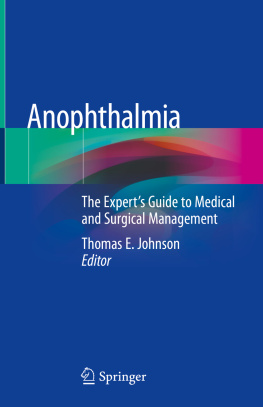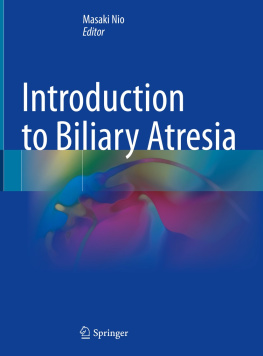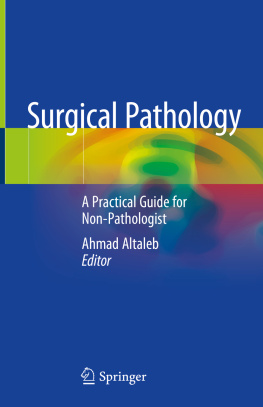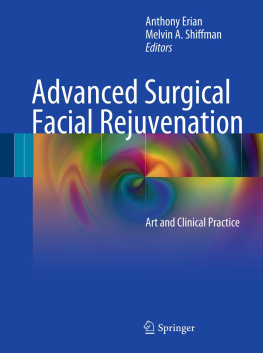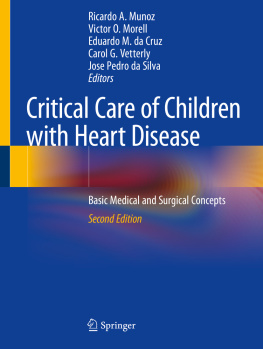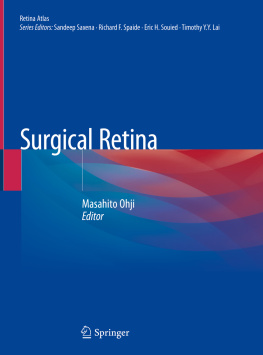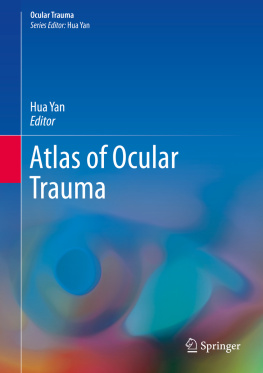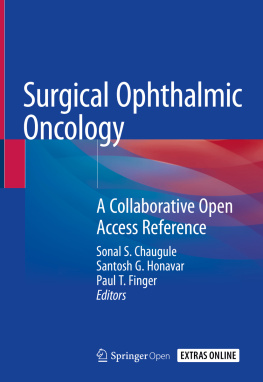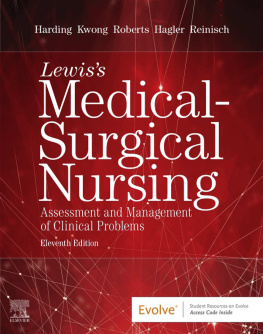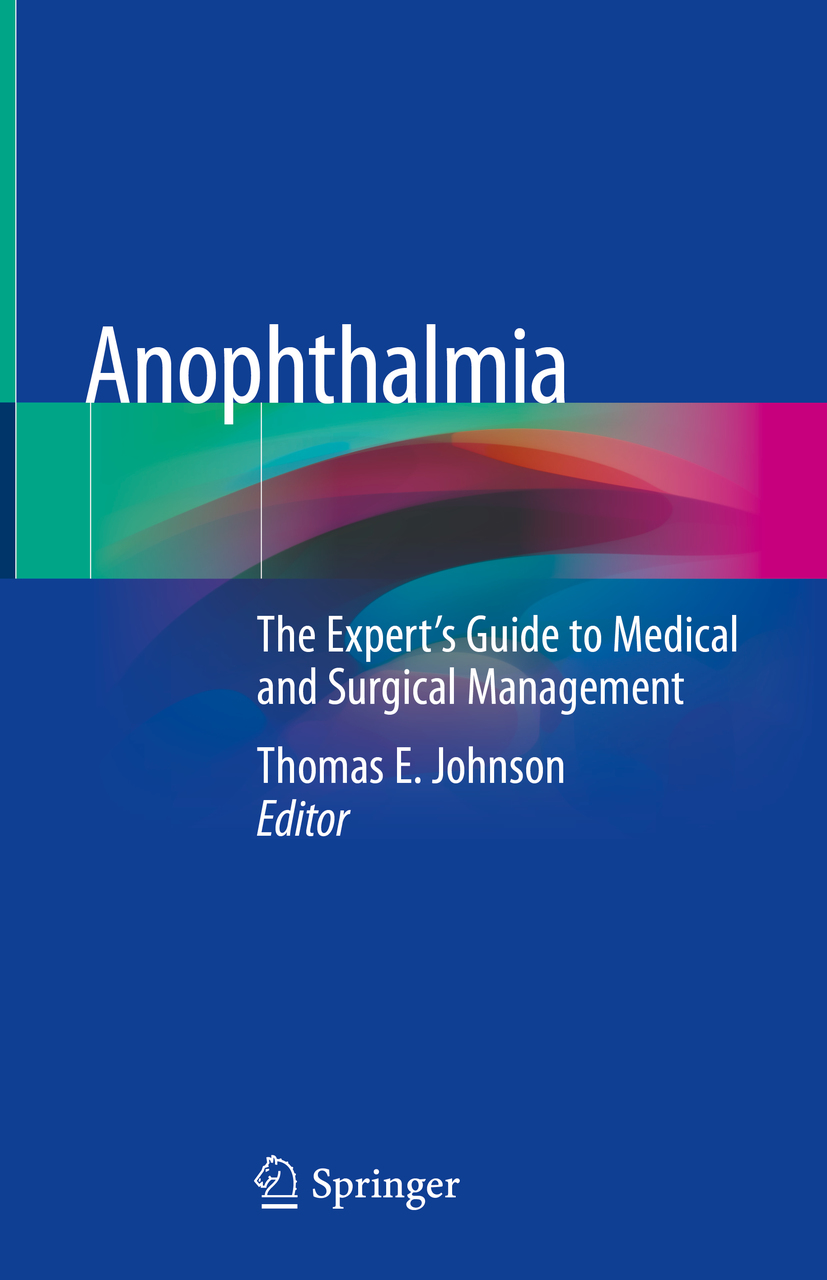Anophthalmia
The Experts Guide to Medical and Surgical Management
Editor
Thomas E. Johnson
Bascom Palmer Eye Institute, University of Miami, Miller School of Medicine, Miami, FL, USA
ISBN 978-3-030-29752-7 e-ISBN 978-3-030-29753-4
https://doi.org/10.1007/978-3-030-29753-4
Springer Nature Switzerland AG 2020
This work is subject to copyright. All rights are reserved by the Publisher, whether the whole or part of the material is concerned, specifically the rights of translation, reprinting, reuse of illustrations, recitation, broadcasting, reproduction on microfilms or in any other physical way, and transmission or information storage and retrieval, electronic adaptation, computer software, or by similar or dissimilar methodology now known or hereafter developed.
The use of general descriptive names, registered names, trademarks, service marks, etc. in this publication does not imply, even in the absence of a specific statement, that such names are exempt from the relevant protective laws and regulations and therefore free for general use.
The publisher, the authors, and the editors are safe to assume that the advice and information in this book are believed to be true and accurate at the date of publication. Neither the publisher nor the authors or the editors give a warranty, expressed or implied, with respect to the material contained herein or for any errors or omissions that may have been made. The publisher remains neutral with regard to jurisdictional claims in published maps and institutional affiliations.
This Springer imprint is published by the registered company Springer Nature Switzerland AG
The registered company address is: Gewerbestrasse 11, 6330 Cham, Switzerland
Portrait of a Flautist with One Eye, 1566, Anonymous Artist, Louvre Museum, Paris
Dedicated to my daughter Olivia whose intellectual curiosity, passion for life, and empathy for others inspires me every day. Also dedicated to the rest of my wonderful family including my mom Anna, sister Janan, brother Lant, Maria, Dayra, and to the memory of my dad Arthur.
Foreword
End-stage ophthalmology: That is the title slide for the lecture I have presented for many years on the topics of evisceration, enucleation, and exenteration operations of last resort when ocular disease has overwhelmed our abilities to salvage an eye. Unfortunately, unlike end-stage renal disease or end-stage cardiac disease, ophthalmologists do not have a biological alternative, such as a kidney or heart transplant, to restore useful function when vision has been lost or a sick eye has become a liability or even a threat to life.
InAnophthalmia: The Experts Guide to Medical and Surgical Management, Dr. Thomas Johnson and his collaborators present a comprehensive approach to managing these always discouraging scenarios. The scope of the book goes considerably beyond the wherefores and standard techniques for removing a diseased eye, including detailed coverage of tertiary care such as congenital anophthalmia, socket expansion, osseointegration, implant exchange, and corneal tattooing. The authors also emphasize the critical partnership between the surgeon and the ocularist, whose skill and artistry are fundamental to a satisfactory functional and aesthetic outcome. Readers should be interested to learn how the expertise of ocularists can be traced to doll-making and dentistry.
As with any area of medicine, ambiguities and controversies remain, such as whether to perform an evisceration or an enucleation in certain circumstances to minimize the risk of sympathetic ophthalmia. After a detailed, balanced review in Chapters 1 and 3 of publications dating back more than two centuries, the authors of Chapter 3 generally favor enucleation. Personally, Igenerallyfavor evisceration, which has served my patients well for the past 35 years, but perhaps I have simply been lucky. Another minor quibble is the preference in Chapter 8 for lining an exenterated socket with split-thickness skin grafts over allowing the cavity to heal by second intention. In the Upper Midwest, granulated sockets tend to be less sensitive to winter temperatures than skin grafts on bone. My hardy heartland patients seem not to be troubled by postoperative orbital wound care, and long-term tumor surveillance is rarely problematic with the availability of sophisticated imaging. However, in the absence of unimpeachable level 1 evidence for much of what we do,vive la diffrence!
I particularly appreciate the books historical perspectives, which emphasize the physical and emotional insults of losing an eye along with the creative approaches that our predecessors have devised and attempted, over many centuries and often unsuccessfully, to improve on wearing a black patch. The wisdom of Carl Becker, quoted in Chapter 1, warrants highlighting: History prepares us to live more humanely in the present and to meet rather than foretell the future. One hopes, however, that the future will include new technologies and treatments that will render anophthalmia a much less assaultive and distressing condition for both patients and physicians than it is today.
George B. Bartley Chief Executive Officer
Preface
The loss of an eye is tragic. Not only do patients suffer a significant functional disability, but also live the rest of their lives with a cosmetic deformity with the real probability of discomfort and inflammation. In the not-so-distant past, ophthalmologists might admit defeat, remove the eye, and then forget about the patient, directing their efforts toward treating eyes that still have vision. Eye removal surgery was often delegated to beginning ophthalmology residents as a way for them to learn surgery with minimal risk. Bad functional and cosmetic outcomes were common, with inflamed sockets, volume loss, implant shifting, eyelid abnormalities, and resultant difficulties in wearing an ocular prosthesis.
But times have changed. We now realize that the loss of an eye is not the final stage of the patients ophthalmology care. It is a new beginning, a new phase. Improved orbital implants, more refined surgical techniques, recognition of problems causing anophthalmic socket problems, and superior ocular prosthesis fabrication have tremendously improved the quality of life for anophthalmic patients. True, the gift of sight has been lost. But the gifts of comfort, freedom from infection and inflammation, and good cosmesis are now possible, boosting patients comfort and self-esteem and allowing them to live more fulfilling lives.
The authors of this book have attempted to create a resource that comprehensively covers the field of anophthalmia: Historical perspectives, indications for eye removal along with surgical techniques, prosthesis making, anophthalmic socket care and maintenance, and surgical procedures to correct anophthalmic socket defects are described. Congenital anophthalmia is reviewed. Newer techniques such as osseointegration are illustrated. It provides a quick reference for medical students, ophthalmology residents and fellows, ophthalmologists, psychologists, and everyone else taking care of these patients. In this changing field, we hope newer advancements will allow us to update this book every few years!

